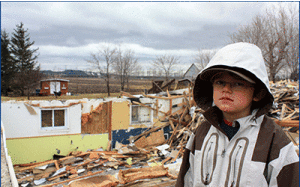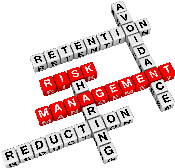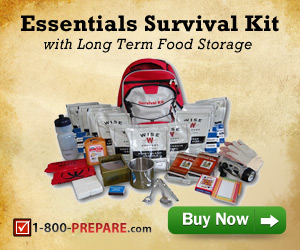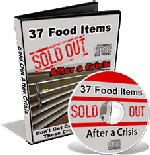Are you Disaster Prepared? How would YOU survive a Natural or Human Disaster?
Whether it is humans or nature to blame for the majority of devastating disasters, emergencies, catastrophes and carnage, you need to ask yourself if you possess the know-how, tools and equipment to survive a disaster or emergency? Are you Disaster Prepared?  For most of us, the answer it is an empathic, No. In a past, personal personal experience, I wasn’t prepared and I paid a high price, but fortunately not the ultimate price of losing my life. I had to learn the hard way and now after several years, my life is only just beginning to normalize. The site is dedicated to providing and sharing tips and information that I have researched and compiled to make it easier for you to avoid the mistakes I made. There is one sure thing we know for sure: natural disasters, emergencies and incidents will happen. Whether they are caused by humans or by Mother Nature they will have an impact on us as individuals and as a community. The degree of the impact will vary, in the extreme cases leading to loss of life, financial ruin, emotional trauma, to a minor inconvenience. Some of these may be preventable and others may be freak occurrences. The simple fact they are clearly dangerous. There is no telling:
For most of us, the answer it is an empathic, No. In a past, personal personal experience, I wasn’t prepared and I paid a high price, but fortunately not the ultimate price of losing my life. I had to learn the hard way and now after several years, my life is only just beginning to normalize. The site is dedicated to providing and sharing tips and information that I have researched and compiled to make it easier for you to avoid the mistakes I made. There is one sure thing we know for sure: natural disasters, emergencies and incidents will happen. Whether they are caused by humans or by Mother Nature they will have an impact on us as individuals and as a community. The degree of the impact will vary, in the extreme cases leading to loss of life, financial ruin, emotional trauma, to a minor inconvenience. Some of these may be preventable and others may be freak occurrences. The simple fact they are clearly dangerous. There is no telling:
![]() When a disaster may strike
When a disaster may strike
![]() In what form it will come
In what form it will come
![]() The severity or intensity of the incident
The severity or intensity of the incident
![]() Length of impact
Length of impact
![]() Whether it is caused by humans or by mother nature
Whether it is caused by humans or by mother nature
![]() How long before help comes
How long before help comes
![]() How the community will react
How the community will react
We know for sure, that there is over a 30% chance you personally will be impacted by either a natural disaster or human related emergency during your lifetime.
There are two broad categories that I have used to classify disasters and emergencies. An impact with either of them can be just as bad. Each requires a variation of knowledge, planning, preparation and enactment
There are two broad categories that I have used to classify disasters and emergencies. An impact with either of them can be just as bad. Each requires a variation of knowledge, planning, preparation and enactment Natural Disasters: This includes tornados, earthquakes, tsunami, floods, volcanic eruptions, and bush fires. Human created disasters and emergencies includes chemical spillages, gas leakages, house fires, terrorists attacks, Wars, Civil Wars, pollution; as well as car accidents, muggings and murders, loss of job, illness, injuries, virus and bacteria plagues, travel diarrhea and overseas incidents. Here is a list of statistics surrounding natural and human disaster and emergencies
Natural Disaster
![]() 357 major Natural disaster were recorded in 2012
357 major Natural disaster were recorded in 2012
![]() 32.4 million people are displaced from their homes each year
32.4 million people are displaced from their homes each year
![]() 258 million people effected due to natural disasters
258 million people effected due to natural disasters
![]() There have been 943 tornadoes in the US in 2013
There have been 943 tornadoes in the US in 2013
![]() There have been over 150 earth quakes over 6.5 globally in 2013 with thousands losing their lives
There have been over 150 earth quakes over 6.5 globally in 2013 with thousands losing their lives
![]() A major tsunamis hits the west coast of the US once every 17 years
A major tsunamis hits the west coast of the US once every 17 years
![]() On average there is over 1750 tornadoes in the US each year
On average there is over 1750 tornadoes in the US each year
![]() Economic damage due natural disasters is estimated to be over $50 billion each year
Economic damage due natural disasters is estimated to be over $50 billion each year
![]() Over 30,000 people die due to drinking-water related illness each year in the US
Over 30,000 people die due to drinking-water related illness each year in the US
![]() Asia is the high risk for natural disasters
Asia is the high risk for natural disasters
[metaslider id=661]
Human Caused Disaster and Emergencies
![]() Over 34,000 people died on the roads in the US in 2013 with millions injured
Over 34,000 people died on the roads in the US in 2013 with millions injured
![]() In the first six months 2013 there were over 110 Terrorist attacks, 2969 deaths and 6769 injuries.
In the first six months 2013 there were over 110 Terrorist attacks, 2969 deaths and 6769 injuries.
![]() There are currently over 13 areas classified around the world as in lethal conflict zones with over 100,000 deaths in 2013
There are currently over 13 areas classified around the world as in lethal conflict zones with over 100,000 deaths in 2013
![]() An average of 7 people die each day in house fires in the US and 13,000 injures p/a causing $7.2 billion of damage.
An average of 7 people die each day in house fires in the US and 13,000 injures p/a causing $7.2 billion of damage.
![]() Estimated that 4.6 million people die each due to air pollution.
Estimated that 4.6 million people die each due to air pollution.
![]() Over 3800 major chemical spills happened in the US in 2013.
Over 3800 major chemical spills happened in the US in 2013.
![]() Close to 13,000 people were murdered in the US last year
Close to 13,000 people were murdered in the US last year
Reading these statistics and information can be depressing and doomsday like. For most of us, there is a risk that any one or more of these things will happen during our life. With a bit of fortune none of these will happen, though this is unlikely as shown by the statistics. With all this doom and gloom we do have some control of reducing the risk and impact of these potentially life shattering events. It all takes some planning, preparation and knowledge. We can;
- Reduce the risk of the disaster, emergency or incident, and
- Reduce the level of the impact of the incident to you
When it comes to disasters there is no telling where or when they can strike, or whether they would come from people or nature.
Disaster hits twice in a week
At times, a natural disaster can strike twice in one area and cause further damage. A case in point: May 20 Oklahoma City was hit by an EF5 tornado, injuring 200 and killing 24 people. If that wasn’t enough some eleven days after the first tornado, the western part of the city was also hit by a second EF5 tornado. The second tornado was responsible for the death of 19 people and hundreds of millions of dollars in infrastructure and personal damages.
During disasters, no one is safe, not even the professionals who are trained to deal with them.
In another case, 19 members of one of the best firefighting units in United States perished during June 30 while trying to localize an uncontrolled wildfire that threatened the towns of Peeples and Yarnell in the state of Arizona. They got trapped when wind suddenly shifted the fire that surrounded the area and didn’t give them a chance to save themselves. The fires scorched almost 200 houses, 8,400 acres and caused the evacuation of around 1,000 people that lived in that area.
On the other hand, there are the Man-made caused disasters.
April 17: a massive explosion happened in a fertilizer plant in a small Texas town, claiming the lives of 15 people and injured almost 200. The explosion spread destruction over a six block radius across the town. July 6: when a runaway train hit into the town of Lac-Megantic, Quebec. The train exploded and incinerated most of the downtown. The explosion and the fire that followed claimed the lives of 50 people and destroyed 30 buildings.
Unprovoked Terrorism Attacks
Furthermore there is the threat of terrorist attacks which, as with other disasters, can happen in any place and any time. No place can be considered truly safe from terrorist attacks. It’s almost a year since the Boston Marathon terror attacks. Even with all their resources and technology, no government could anticipate that or do something about it until the moment when it was too late. Three people were killed and 264 people have asked for medical help as a result of the bombs explosions. The Boston Marathon terror attacks were a terrible reminder that the war on terror is not over and that neither civilians nor others are truly safe.
How to Manage this
 Every day we hear about natural disasters, emergencies and other personal incidents. With all these incidents, emergencies and disasters the knowledge and information base is extensive and growing every day. There is a whole industry around disaster and emergency responses. Local, state and national governments and agencies like FEMA are investing and spending billions of dollars in preparing and responding to these activities. We have learned many lessons in preparing, responding and avoiding disasters and emergencies. The key things include:
Every day we hear about natural disasters, emergencies and other personal incidents. With all these incidents, emergencies and disasters the knowledge and information base is extensive and growing every day. There is a whole industry around disaster and emergency responses. Local, state and national governments and agencies like FEMA are investing and spending billions of dollars in preparing and responding to these activities. We have learned many lessons in preparing, responding and avoiding disasters and emergencies. The key things include:
1. Be aware of potential Disasters and Emergencies
2. Have a recovery plan
3. Rehearse the recovery plan
4. Have equipment ready for the emergency
The article, Top 10 Natural Disaster and the Survival Lessons we go into more detail about some of the key lessons.
As for individuals, there is considerable less available and structured information to use without becoming guru’s or obsessed about preparing for a disaster or emergency. These information guidelines are difficult and difficult to obtain. This is where the site will be very useful for you and your family. This site is being geared for us normal people.
What is your Risk Profile?
One of the first things we all should understand is our risk profile, and how likely we are to be impacted by a natural disaster or Emergency. Some factors in determining your level of risk include:
![]() Location we are living,
Location we are living,

![]() the type of work we do,
the type of work we do,
![]() the age we are,
the age we are,
![]() unfortunately whether we are female or male,
unfortunately whether we are female or male,
![]() the country we live in,
the country we live in,
![]() the activities we undertake,
the activities we undertake,
![]() the type of life style we live.
the type of life style we live.
There are an unlimited number of risks in our daily lives and they change every moment. As for example, when eating a meal in a restaurant, we could choke on a fish bone or get caught in an avalanche on Mount Everest while trekking. The best thing that we can do is to make sure that you are prepared for more common incidents and reduce the impact. The best use of your time is to pick an available pre-prepared generic emergency and disaster plan and adjust it for your individual and family circumstances. Once completed, there will be a number of basic activities that you will need to complete. Once this completed, the tasks will be considerably easy to manage. It is worthwhile making an effort in putting together your own personal Disaster and Emergency Prevention Plan and/or Risk Mitigation Plan. Being prepared and giving thought of how to handle a disaster, even at a minimalist approach of planning, can significantly reduce the risk and impact. The site is dedicated in helping you pull such a plan together We will be covering a wide range of topics to provide you wealth of information to allow you to create the strategy that best fits you. The areas that that we will be include;
First Aid Supplies
 No emergency disaster plan is complete without first aid supplies and the specific and essential elements. In any type of emergency, the first aid kit is the most important thing to have in hand. Having a first aid kit accompanied with the basic medic supplies is what saves lives and helps people survive the most difficult of times.
No emergency disaster plan is complete without first aid supplies and the specific and essential elements. In any type of emergency, the first aid kit is the most important thing to have in hand. Having a first aid kit accompanied with the basic medic supplies is what saves lives and helps people survive the most difficult of times.
Read more about (First Aid Help Survival 101) I have been using 1800-Prepare.com to purchase my First Aid Kits and supplies. Give them a try.
Emergency Water Supplies
Another critical item for a family disaster and emergency plan is to have access to safe clean drinking water. It is well known that you can only survive a couple of days without water. There are a number of options in sourcing clean safe water. We will be discussing this in future articles.
Emergency Food Supplies
 An average healthy adult can survive for many days without food and have few long term impacts. Though, it is quite different for children and the elderly. They require minimal sustenance within a couple of days. This can be problematic in a disaster or emergency event. For any serious disaster kit, having an emergency food supply will support you through a time of crisis. In the not so distant future, we will provide some guidelines. Register here to receive notification when this is completed. There is a just 37 main items that you need to have on hand for a disaster.
An average healthy adult can survive for many days without food and have few long term impacts. Though, it is quite different for children and the elderly. They require minimal sustenance within a couple of days. This can be problematic in a disaster or emergency event. For any serious disaster kit, having an emergency food supply will support you through a time of crisis. In the not so distant future, we will provide some guidelines. Register here to receive notification when this is completed. There is a just 37 main items that you need to have on hand for a disaster.
Do you want to know what the these 37 Food Items are?
Survival Kit
Should a disaster or an emergency last more than a couple of days (food, water and medical aid supplies aside) you will need other supplementary accessories. Survival accessories such as blankets, personal and sanitation items, sleeping bags, rain gear, manual can openers, scissors, work gloves, torches, dry matches and so on. If the period of the disaster or emergency had to extend these accessories will help you survive until help arrives.
For more on survival accessories read – Simplified Guide on How to Survive a Disaster
Emergency/Disaster Shelter
The need for a sustainable robust disaster shelter will vary depending on where you live. For example, if you live on a tornado belt in the US, it is more likely that you will need and use a tornado proof emergency shelter versus someone who lives in a placid environment to someone who may live in an area that is likely to come under terrorist attack. Designing and understanding your requirements for Emergency Disaster is not an easy task, nor should it to be taken lightly. The Emergency Disaster shelter may come in forms varying from a specially built and fitted out room, to a standalone shelter. A disaster/emergency shelter not only needs to be capable of withstanding all sorts of disasters, but it needs to be large enough to hold everyone living in the household, as well as friends and neighbours. Other consideration for the shelter is that it should have sufficient storage room to keep ample water and food supplies, air supplies, medical aid supplies and other survival kit accessories. There is a good article, 9 questions one should ask himself before buying a shelter discussing all the potential requirements. read more
Clean Air & Breathing Apparatus
We all take clean fresh air for granted. Unfortunately having access to clean air in a disaster situation is not necessary available. Some recent examples include XX volcanic eruption where sulphur dioxide and carbon monoxide spread many kilometers around the site, to heavy pollution to major flu virus outbreaks. Having the right cleaning air filtering device for the specific situations could save your life.
Self Defense
Unfortunately, disaster and emergency’s can bring the worse out of people, from looting, to rape to murder. As a human race, we are capable of doing terrible things when we are placed under extreme duress and stress in hope of surviving. Protecting oneself is paramount. In some cases this may mean owning a weapon or self-defense products. In articles to come, we will provide information and insights into a range of self-defense products that include security surveillance to stun guns, flares and guns.
Emergency Clothing and Sleeping Equipment
Having adequate clothing and sleeping gear in a long term disaster and emergency becomes more essential the longer the disaster lasts. Ideally they will be stored in secure and safe location that can be easily accessed.
Power and Generation
One of the first things to go in a disaster is electricity. This is one the core essential services we all rely on in our daily lives. We need electricity for our basic living, especially for refrigeration and communications. Having some level of portable power generation would be advantageous to store food as well as providing electricity for communications
In Summary
Finally, surviving emergency situations is never just about a good shelter, water supplies, food supplies, first aid supplies and other survival kits. It’s also about having the right attitude and knowledge to manage your situation. With sufficient knowledge one will be better prepared to manage and reduce the stress of disasters and emergency situations. This is one the key objective for this site, to help you be better prepared.
As an introduction for the basics of surviving a disaster read my article on Top Tips on how to Survive a Disaster. By having this knowledge you will have the confidence to be calm in a disastrous situation.

Recent Comments